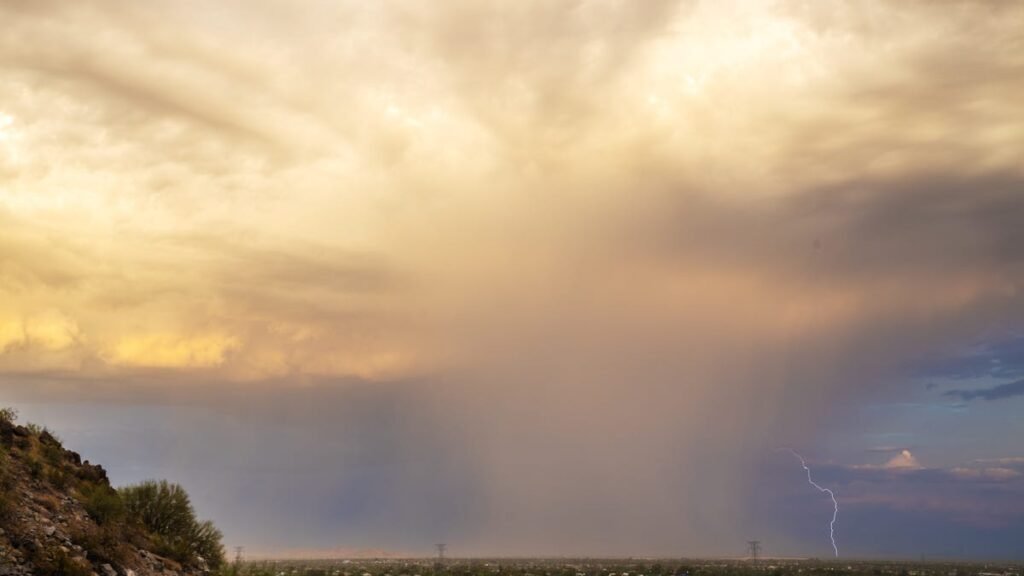Weather Update for Metro Phoenix
On Wednesday evening, the Metro Phoenix area was affected by a shift that moved weather patterns north from southern Arizona, resulting in rain and dust being cleared from the region, according to officials.
The National Weather Service in Phoenix indicated that showers and storms were expected to start in southern Arizona on Wednesday afternoon, with conditions shifting northward into the evening.
Austin Jamison, a meteorologist from the National Weather Service, noted that the likelihood of storms could increase significantly, rising from 10-20% to around 30-40% later in the afternoon.
These storms could bring gusty winds and possibly kick up dust, as warned by the weather department.
By 5 PM on Wednesday, there had been no record of measurable rain in Metro Phoenix, as shown by the rainfall map from the Maricopa County Flood Control District.
Even though rain wasn’t expected to arrive until the afternoon, the cloud cover earlier in the day contributed to a drop in temperatures from highs of 105 degrees around noon to the mid-90s by 2 PM.
Jamison also mentioned that additional storms could occur on Thursday afternoons, with rainfall probabilities decreasing overnight before hitting 30-40% again.
Across the state, the National Weather Service issued various warnings regarding tornadoes, flash floods, and thunderstorms.
Tornado Warning for Cochise and Graham Counties
A temporary tornado warning was issued for Cochise and Graham counties, which began at 3:47 PM and ended at 4:15 PM on August 21.
Flash Flood Warning for Coconino County
On August 21, a flash flood warning was issued for Coconino County starting at 3:36 PM, set to last until 9:45 PM.
Thunderstorm Warning for Pima County
Similar flash flood warnings were also communicated for Pima County on August 21.
For the latest information on watches and warnings, reference the weather alert page.
Understanding the Monsoon
This desert weather system can manifest quite differently in urban areas like Phoenix compared to the natural surroundings of the Sonoran Desert.
The Phoenix Meteorological Bureau explains that during summer, high-pressure systems from northern Mexico drift northward, altering weather patterns in the southwestern U.S.
Interestingly, weather typically moves from west to east in spring, but in summer, the pattern reverses, flowing from east to west.
This shift brings significant moisture into the atmosphere as tropical air travels north through the desert, fostering conditions more conducive to rain and thunderstorms.
July tends to be the rainiest month in Phoenix, generally receiving about 1-1.05 inches, while June often stands out as the driest, averaging only 0.02 inches.
















